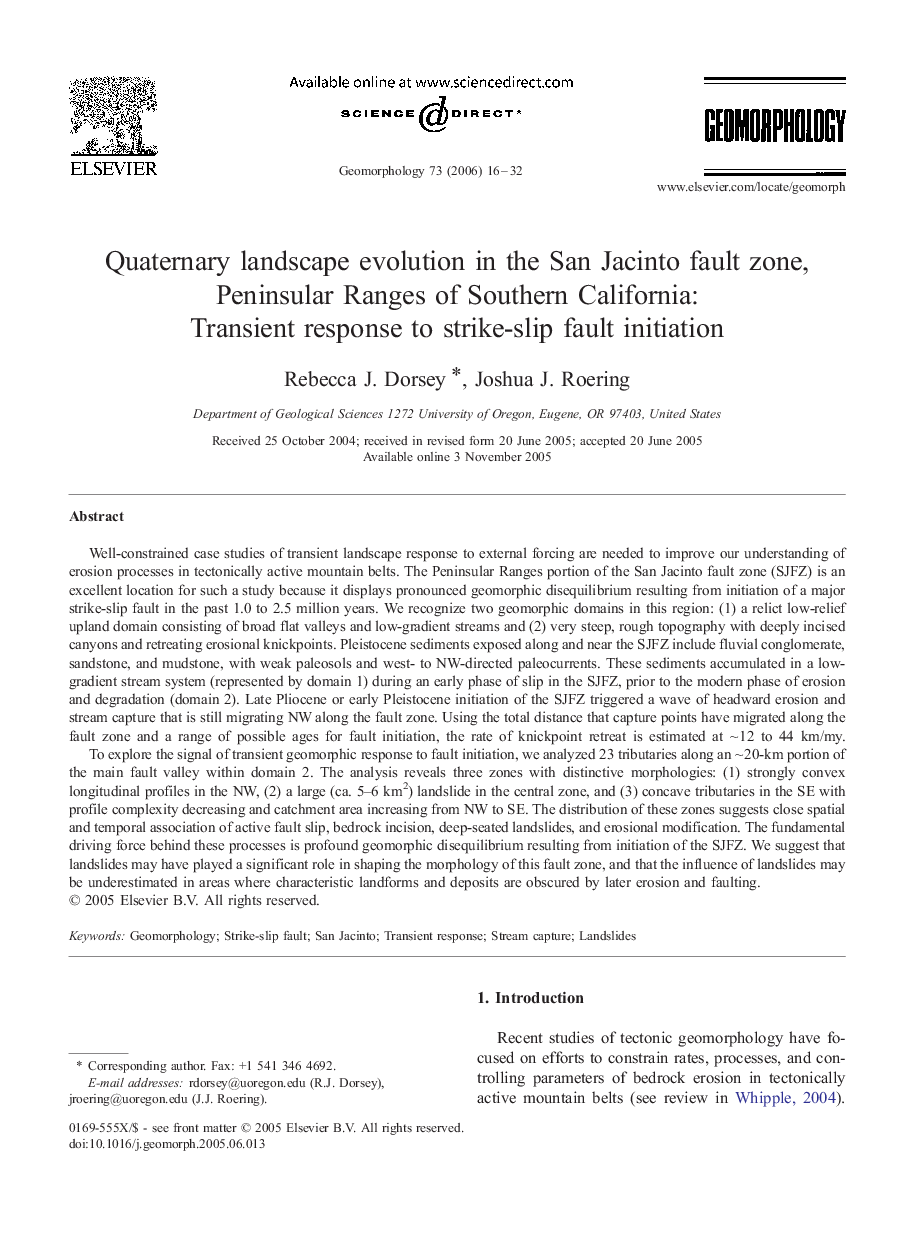| کد مقاله | کد نشریه | سال انتشار | مقاله انگلیسی | نسخه تمام متن |
|---|---|---|---|---|
| 4687663 | 1635605 | 2006 | 17 صفحه PDF | دانلود رایگان |

Well-constrained case studies of transient landscape response to external forcing are needed to improve our understanding of erosion processes in tectonically active mountain belts. The Peninsular Ranges portion of the San Jacinto fault zone (SJFZ) is an excellent location for such a study because it displays pronounced geomorphic disequilibrium resulting from initiation of a major strike-slip fault in the past 1.0 to 2.5 million years. We recognize two geomorphic domains in this region: (1) a relict low-relief upland domain consisting of broad flat valleys and low-gradient streams and (2) very steep, rough topography with deeply incised canyons and retreating erosional knickpoints. Pleistocene sediments exposed along and near the SJFZ include fluvial conglomerate, sandstone, and mudstone, with weak paleosols and west- to NW-directed paleocurrents. These sediments accumulated in a low-gradient stream system (represented by domain 1) during an early phase of slip in the SJFZ, prior to the modern phase of erosion and degradation (domain 2). Late Pliocene or early Pleistocene initiation of the SJFZ triggered a wave of headward erosion and stream capture that is still migrating NW along the fault zone. Using the total distance that capture points have migrated along the fault zone and a range of possible ages for fault initiation, the rate of knickpoint retreat is estimated at ∼ 12 to 44 km/my.To explore the signal of transient geomorphic response to fault initiation, we analyzed 23 tributaries along an ∼ 20-km portion of the main fault valley within domain 2. The analysis reveals three zones with distinctive morphologies: (1) strongly convex longitudinal profiles in the NW, (2) a large (ca. 5–6 km2) landslide in the central zone, and (3) concave tributaries in the SE with profile complexity decreasing and catchment area increasing from NW to SE. The distribution of these zones suggests close spatial and temporal association of active fault slip, bedrock incision, deep-seated landslides, and erosional modification. The fundamental driving force behind these processes is profound geomorphic disequilibrium resulting from initiation of the SJFZ. We suggest that landslides may have played a significant role in shaping the morphology of this fault zone, and that the influence of landslides may be underestimated in areas where characteristic landforms and deposits are obscured by later erosion and faulting.
Journal: Geomorphology - Volume 73, Issues 1–2, January 2006, Pages 16–32